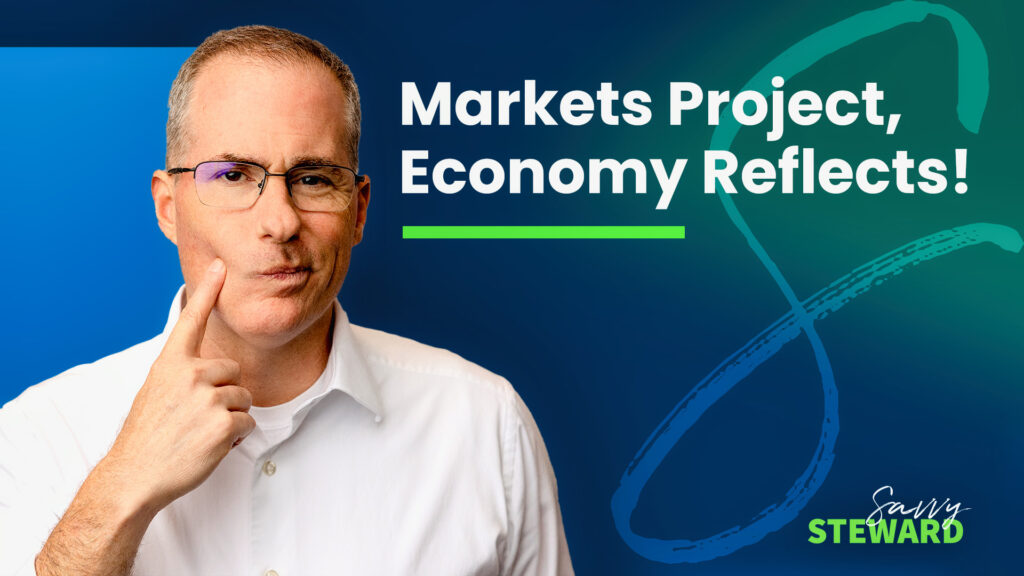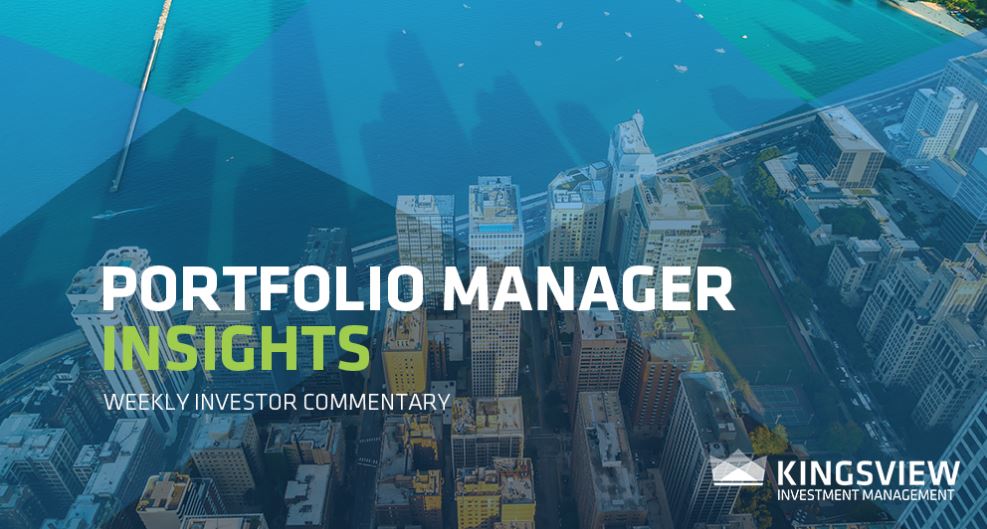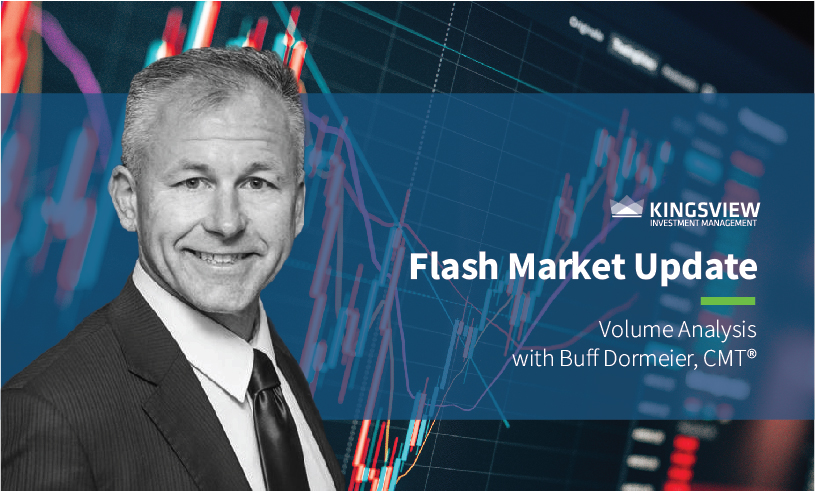- Climbing Stocks, Sinking Economy: What’s REALLY Going On?
- Why Do People Assume the Market and Economy Move Together?
- The Key Difference: Markets Project, Economy Reflects
- The 2020 Example: A Stock Market Boom in a Collapsing Economy
- Why Stock Prices Don’t Always Match Economic Reality
- When the Market and Economy Move in Sync
- What This Dynamic Means for You as an Investor
Climbing Stocks, Sinking Economy: What’s REALLY Going On?
Executive Summary
The stock market and the economy—two forces that seem like they should move in sync, yet often go opposite directions. Why does the market sometimes soar when the economy struggles? Why do economic downturns sometimes come with market rallies? The key to understanding this mystery lies in one fundamental concept: Markets project, economy reflects.

Want to watch an in-depth exploration of this topic? Check out this video on my YouTube channel, @savvysteward: Climbing Stocks, Sinking Economy: What’s REALLY Going On?
Climbing Stocks, Sinking Economy: What’s REALLY Going On?
Would you describe the relationship between the economy and the stock market as a see-saw or a tandem swing? The answer might surprise you!
A see-saw moves in opposite directions—one side goes up while the other drops. A tandem swing moves in sync—two people, facing different directions but moving together.
Which one best represents how the market and the economy interact? Most people assume it’s a tandem swing—that the stock market reflects the economy’s health. But in reality, the stock market and the economy often behave more like a see-saw, with one rising while the other falls. Why? Because markets project, while the economy reflects.
Today, we’re breaking down the relationship between these two forces, why they sometimes move in opposite directions, and what this means for your investments.
Why Do People Assume the Market and Economy Move Together?
It makes sense at first glance. The economy is made up of businesses producing goods and services. The stock market is made up of companies that sell those goods and services. So, if the economy is growing, stock prices should rise. If the economy is struggling, the market should fall.
But that’s not always the case. While news headlines love to tie the two together—“Markets rally as GDP improves!” or “Stocks drop on recession fears!”—the truth is that the stock market moves based on expectations about the future, while the economy reflects what has already happened.
This fundamental difference is why the two often move in opposite directions.
The Key Difference: Markets Project, Economy Reflects
Think of it this way:
- The economy measures past and present conditions. GDP growth, unemployment rates, and inflation numbers all reflect events that have already taken place.
- The stock market is a forward-looking machine. Investors don’t react to what’s happening now—they react to what they believe will happen next.
Stock prices rise or fall based on expectations of future earnings, interest rates, and business conditions. This means the market often moves ahead of economic data, pricing in recovery before it happens—or selling off before a downturn is officially recognized.
The 2020 Example: A Stock Market Boom in a Collapsing Economy
A perfect example of this disconnect was the second quarter of 2020, when the pandemic sent the global economy into a tailspin.
- GDP shrank at a record-breaking 31% annualized rate—the sharpest economic contraction in U.S. history.
- Unemployment soared to nearly 15%, with millions losing their jobs.
- Businesses shut down, supply chains froze, and consumer spending plummeted.
Yet, despite these economic conditions, the S&P 500 gained over 20% in that same period.
Why? Because markets project, while the economy reflects. Investors weren’t looking at the current devastation—they were looking ahead. They saw:
- Massive government stimulus propping up businesses and consumers.
- The Federal Reserve cutting interest rates to near zero.
- A wave of new retail investors jumping in to “buy the dip.”
Even as the economic data showed devastation, the stock market soared because investors expected a recovery.
Why Stock Prices Don’t Always Match Economic Reality
There are several reasons the stock market doesn’t always reflect economic conditions:
- The Participation Gap
Not everyone who participates in the economy invests in the stock market. While nearly all Americans are affected by economic changes, only around 55-60% have stock market exposure. This means market performance doesn’t always align with the experiences of the average worker or consumer. - Stock Market ≠ Entire Economy
The stock market consists of large publicly traded companies, but most jobs come from small businesses, which aren’t represented in market indexes. While Wall Street may thrive, Main Street could still struggle. - Concentration of Market Power
A small number of mega-cap companies (Apple, Microsoft, Amazon, etc.) drive a large portion of market performance. Their success can push indexes higher, even if other sectors are struggling. - Sector-Specific Performance
Different industries recover at different speeds. In 2020, tech and healthcare boomed while hospitality and retail collapsed. The market doesn’t move as one—it’s driven by sector-specific trends.
When the Market and Economy Move in Sync
Despite their differences, the stock market and economy can move together when driven by the same factor: sentiment.
- Optimism fuels both. When people feel confident, they spend more, businesses grow, and investors drive stock prices higher.
- Pessimism drags both down. When uncertainty takes over—whether due to recession fears, inflation, or geopolitical risks—both economic activity and market performance can decline.
A great example of alignment was the post-COVID recovery in 2021. As vaccines rolled out and businesses reopened, consumers spent more, GDP grew, and stock markets surged together.
What This Dynamic Means for You as an Investor
Understanding the difference between the stock market and the economy can help you make smarter investment decisions.
Here’s how:
- Don’t overreact to short-term headlines. Economic downturns don’t always mean market crashes, and market rallies don’t always signal economic strength.
- Think long-term. The market is forward-looking, so trying to time trades based on current economic data is a losing strategy.
- Stay grounded in strategy. Avoid getting caught up in emotional reactions—whether that’s panic selling or chasing gains.
The market and economy are two parts of a larger financial picture. While they don’t always move in tandem, both influence the broader investment landscape. Recognizing the differences can keep you focused on long-term success.
Contact Information
Keith Demetriades, CFP®, CKA®, is dedicated to helping individuals, families, and organizations integrate faith-based principles into their financial planning. Oikonomia is a foundational concept in his practice, reflecting his commitment to ethical and values-driven financial management.
Keith welcomes conversations about the topics discussed in this piece and is available to assist in creating a financial plan that aligns with your faith and values. For more information or to start a conversation about your financial future, contact Keith Demetriades at (806) 223-1105 or visit his website at https://www.kingsview.com/advisor/keith-demetriades/.
Disclaimer: The information provided in this blog is for educational purposes only and should not be considered financial advice. Please consult a qualified financial advisor to discuss your specific situation and needs. Past performance does not indicate future results, and all investments carry risks, including potential loss of principal. Any financial product or strategy references are purely illustrative and should not be construed as endorsements or recommendations.


